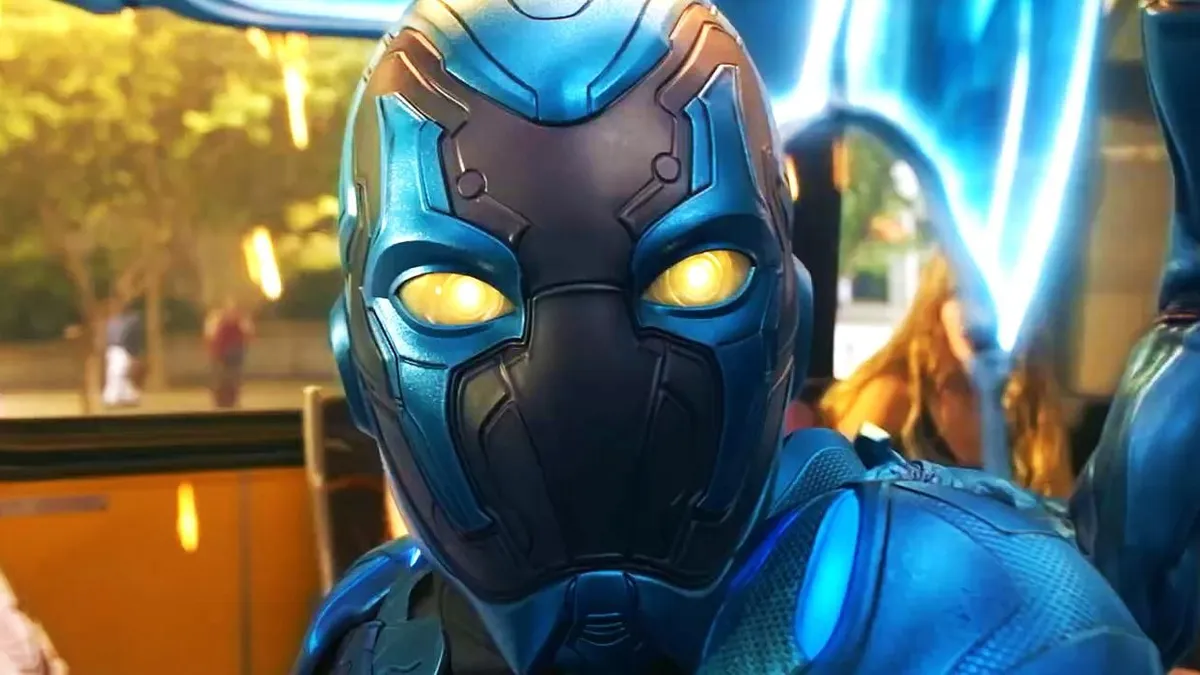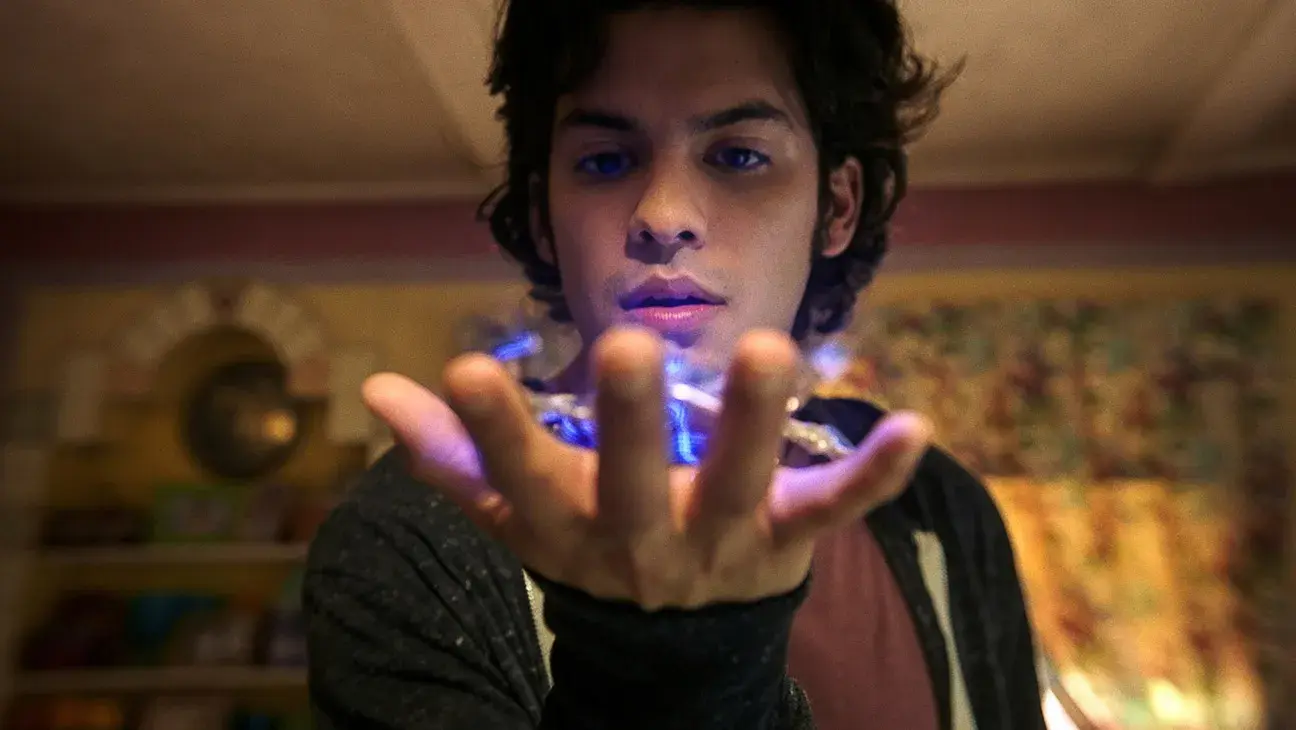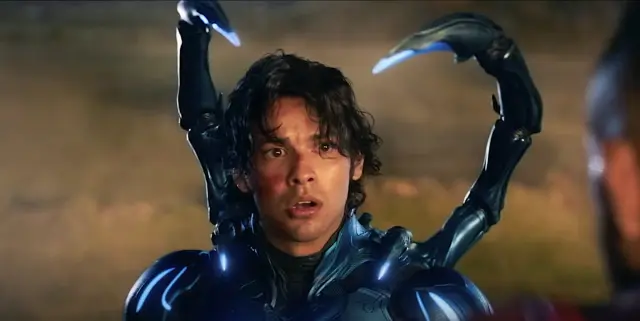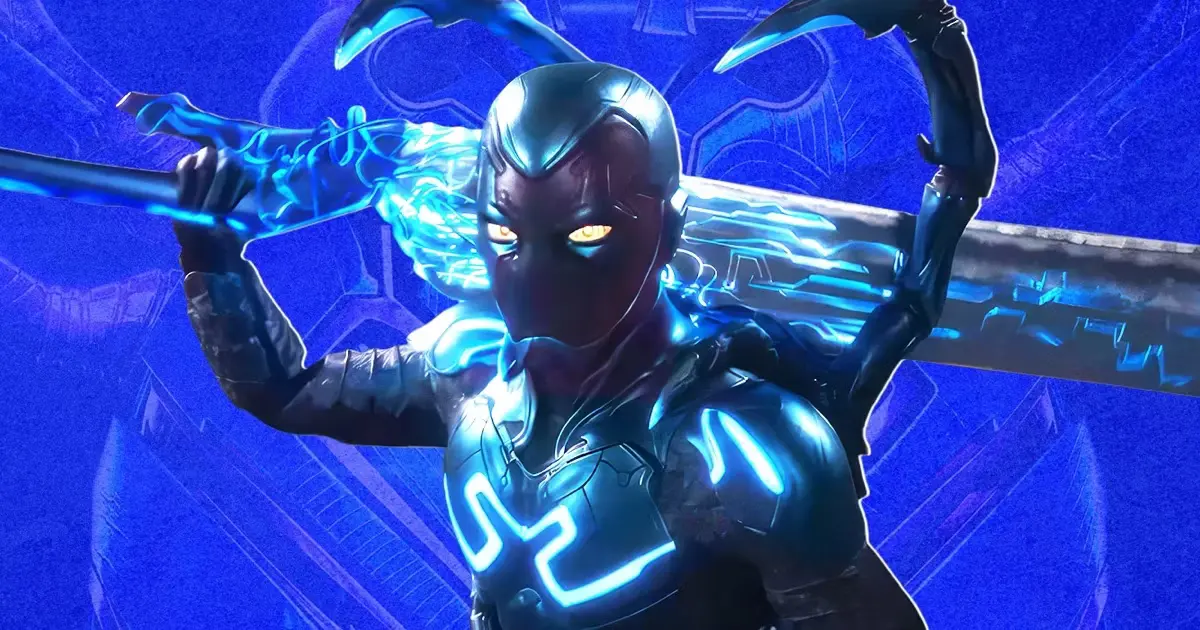At the forefront of the DC Universe’s cinematic landscape stands the eagerly anticipated “Blue Beetle” movie, a production that promises to carve its mark on the expansive DCU canvas. With James Gunn, a stalwart of the DCU, at its helm, the film’s influence is expected to extend far beyond mere entertainment, potentially reshaping the future trajectory of Jaime Reyes, the titular Blue Beetle.
Central to the heart of “Blue Beetle” is the exploration of Jaime Reyes’ familial relationships and their undeniable impact on his character’s development. This underlying theme serves as a linchpin for the narrative, propelling the story forward with the Reyes family’s profound significance in Jaime’s growth.
Blue Beetle Plot and Ending Explained

From the movie’s outset, the plot begins to unfold with the involvement of Kord Industries, a powerful entity in the DCU. The enigmatic Scarab takes center stage as Kord Industries initiates a transformative excavation project. This key moment is marked by Carapax’s introduction, as he greets his boss, Victoria Kord, heralding a sequence of events that will reverberate throughout the movie.
The setting then shifts to Palmera, Texas, a city transformed by Kord Industries’ advancements. The juxtaposition of futuristic technology and the cultural diversity brought by Mexican and Latin immigrants lends depth to the community’s dynamics.
As the movie progresses, Jaime Reyes takes his place in the spotlight, freshly graduated and eagerly awaited by his family at the airport. Amid the warm reception from his parents, grandmother, sister Milagro, and Uncle Rudy, Jaime’s familial bonds come to the fore. This familial foundation sets the stage for his subsequent involvement in the unfolding story.

A significant turning point arises as Jaime crosses paths with Jenny Kord, setting off a chain reaction of events. Jenny, Victoria Kord’s niece, becomes the conduit for unveiling the OMAC project’s intricate ties to the Scarab and Kord Industries’ technological advancements. This revelation propels Jaime into a world far beyond his imagination, embroiling him in corporate intrigue and larger-than-life conflicts.
The convergence of human curiosity and extraterrestrial technology results in an unexpected fusion, intertwining Jaime’s fate with the Scarab’s enigma.
As the narrative unfolds, Jaime’s journey of exploration takes center stage. The intricate dance between his human nature and the Scarab’s extraterrestrial origins becomes a focal point. This fusion of the organic and the cosmic shapes Jaime’s evolution and introduces him to a realm of conflicts driven by technology, ethics, and personal growth.
The narrative arc reaches its zenith with a showdown between Jaime and Carapax, fueled by a clash of ideologies and technological prowess. This clash, fraught with emotional depth, culminates in a climactic sequence that challenges both characters’ convictions and sparks a realization that transcends their individual roles.
As the movie hurtles toward its conclusion, a tapestry of redemption and unity emerges. Themes of family, community, and personal growth intertwine, forming the emotional core of the story. The culmination of the narrative showcases the power of togetherness, as Jaime’s journey intersects with the lives of those around him, culminating in a united front against adversity.

“Blue Beetle” transcends being a mere superhero saga. It navigates the intricacies of identity, power, and responsibility. Jaime Reyes’ transformation from ordinary individual to reluctant hero serves as the backdrop for exploring themes that resonate far beyond the confines of the movie screen.
The “Blue Beetle” movie stands as a testament to the potency of storytelling in the superhero genre. Through Jaime Reyes’ journey, viewers are invited to ponder the intricate interplay of humanity, technology, and the bonds that define us. With its fusion of familial dynamics, extraterrestrial mystery, and ethical dilemmas, “Blue Beetle” adds a multi-dimensional layer to the ever-evolving tapestry of the DC Universe.









